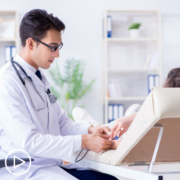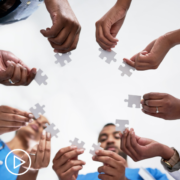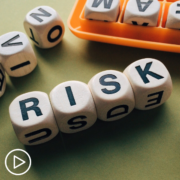Key Advice for Myeloma Patients | Questions to Ask About a Care Plan
Key Advice for Myeloma Patients | Questions to Ask About a Care Plan from Patient Empowerment Network on Vimeo.
How can newly diagnosed myeloma patients be proactive in their care? Dr. Krina Patel shares key advice for patients, including the importance of making notes before office visits and the role that a care partner can play in overall support.
Dr. Krina Patel is an Associate Professor in the Department of Lymphoma/Myeloma at The University of Texas MD Anderson Cancer Center in Houston, Texas. Dr. Patel is involved in research and cares for patients with multiple myeloma. Learn more about Dr. Krina Patel.
Related Resources:
Transcript:
Katherine:
For newly diagnosed patients, what key advice would you share with them? And are there specific questions they should be asking their doctor about their care plan?
Dr. Krina Patel:
Yeah. So, I know it’s hardest for newly diagnosed patients. Most people have not even heard what multiple myeloma is. They’re learning how to spell it correctly and making sure it’s not melanoma. And this is a conversation I have with so many of my new patients that I think it’s really hard your visit, and maybe even your second visit, to ask all the right questions. So, really, coming home and every time you’re on a treatment or you’re talking about a treatment and you have a question, write it down because I know it’s really hard when we’re only there for 15, 30 minutes to talk to you.
For us, we have MyChart, so my patients will send questions as they think of them through that. And I think that’s really important. Sometimes it’s hard to know what questions to ask when you have no idea what’s about to happen, and that’s okay. But I think as you’re going through therapy, really making sure that you ask about alternative therapies that might be available and why someone is picking one versus the other, making sure you know what supportive medications you really need.
And I will say that, with myeloma, a lot of our treatments are patient-friendly but they do cause side effects and infections, so, we have a lot of supportive medications we use; so, again, anti-shingles, potentially if you could get a blood clot, we have you on some type of blood thinner.
We have people on against steroids because of all of our initial therapies have steroids. We wanna make sure you don’t get ulcers in your stomach, so we have patients on proton pump inhibitors. There’s a lot of things we do to again decrease that toxicity. So, that’s important.
And then, I think the next part is when you’re on treatment, whatever symptoms you’re having keep a log of that. Some things are, okay, maybe it’s just a little bit here and there, that you’re feeling fatigued but then you’re better. But there are certain things that cause a lot of side effects that my patients sometimes don’t tell me about. So, the steroids can cause major insomnia for some of my patients where they don’t sleep for three days, and that’s not okay. We can decrease those.
So, there are ways to manipulate the treatments as we’re going through to make sure that not only are you having a great response but that you’re not having major side effects that are actually gonna hurt your health down the road. So, really important to discuss those things that you’re having as you’re going through.
Katherine:
There’s also the importance of a care partner in your life –
Dr. Krina Patel:
Yes.
Katherine:
– right?
Dr. Krina Patel:
I agree. So, I joke with my patients but it’s real; there’s actually a study that shows that men with three and a half women in their lives do much better in healthcare in general than those who don’t. So, I’m like “Go get more women in your life” –
Katherine:
I love that.
Dr. Krina Patel:
– or just caregivers in general.
Men are great caregivers too, but really having someone there that can listen for you and write down those things because it is overwhelming. And when you’re on treatment there are a lot of times when you just can’t pay attention. You can’t focus. You can’t listen to everything. And so, the more people that are there, they’ll pick up other things.
So, a lot my patients will even have their loved ones on their phone with them, even if they can’t be there in person so that they can record. And a lot of my patients will record things and they’ll ask me; so, definitely as whoever you’re talking to if it’s okay to record. But most of us will say “Yes, it’s completely fine” so that you can listen to it again when you go home.









